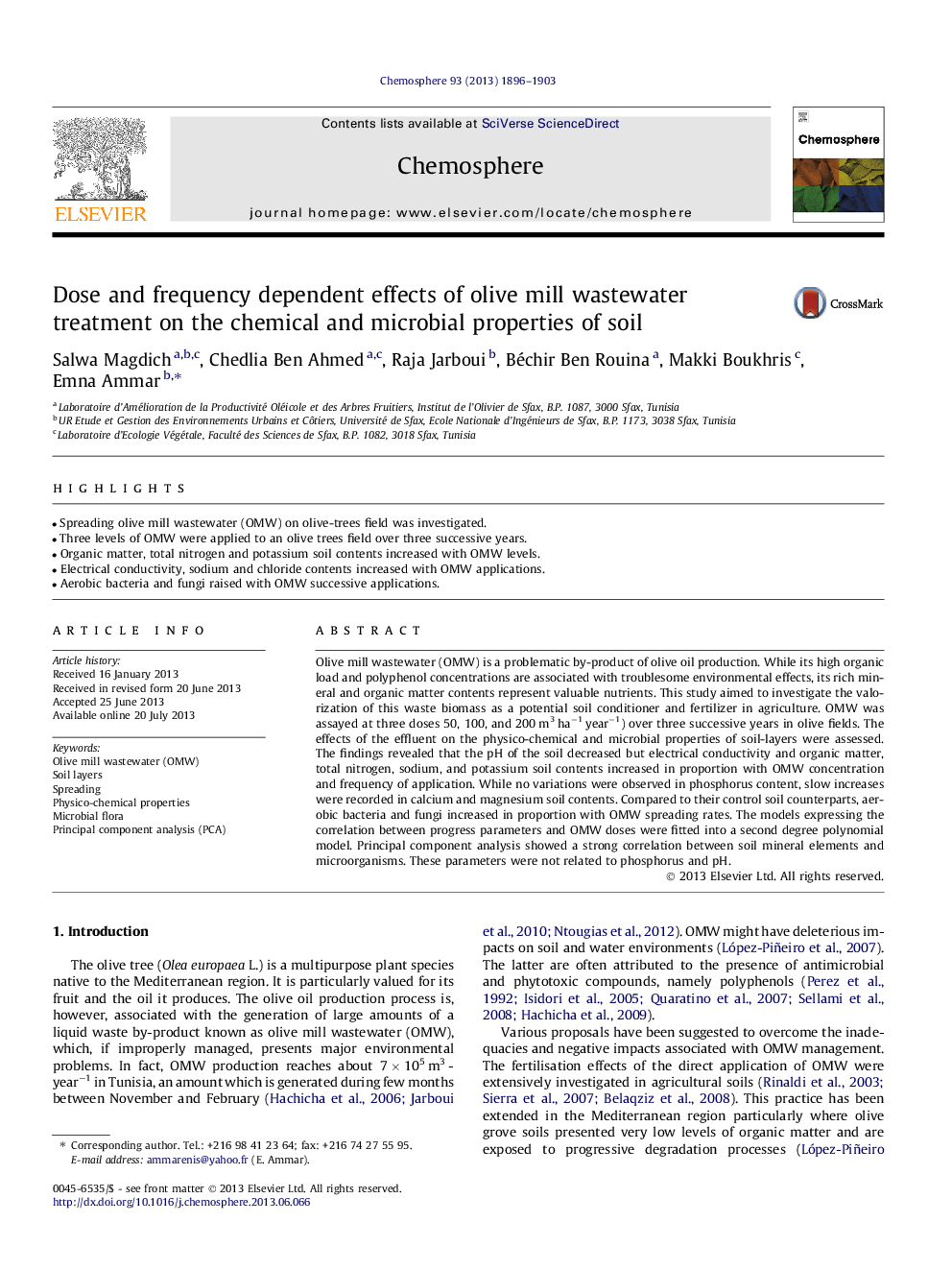| کد مقاله | کد نشریه | سال انتشار | مقاله انگلیسی | نسخه تمام متن |
|---|---|---|---|---|
| 6310113 | 1307460 | 2013 | 8 صفحه PDF | دانلود رایگان |
عنوان انگلیسی مقاله ISI
Dose and frequency dependent effects of olive mill wastewater treatment on the chemical and microbial properties of soil
ترجمه فارسی عنوان
اثرات وابسته به دوز و فرکانس پساب فاضلاب زیتون بر خصوصیات شیمیایی و میکروبی خاک
دانلود مقاله + سفارش ترجمه
دانلود مقاله ISI انگلیسی
رایگان برای ایرانیان
کلمات کلیدی
موضوعات مرتبط
علوم زیستی و بیوفناوری
علوم محیط زیست
شیمی زیست محیطی
چکیده انگلیسی
Olive mill wastewater (OMW) is a problematic by-product of olive oil production. While its high organic load and polyphenol concentrations are associated with troublesome environmental effects, its rich mineral and organic matter contents represent valuable nutrients. This study aimed to investigate the valorization of this waste biomass as a potential soil conditioner and fertilizer in agriculture. OMW was assayed at three doses 50, 100, and 200Â m3Â haâ1Â yearâ1) over three successive years in olive fields. The effects of the effluent on the physico-chemical and microbial properties of soil-layers were assessed. The findings revealed that the pH of the soil decreased but electrical conductivity and organic matter, total nitrogen, sodium, and potassium soil contents increased in proportion with OMW concentration and frequency of application. While no variations were observed in phosphorus content, slow increases were recorded in calcium and magnesium soil contents. Compared to their control soil counterparts, aerobic bacteria and fungi increased in proportion with OMW spreading rates. The models expressing the correlation between progress parameters and OMW doses were fitted into a second degree polynomial model. Principal component analysis showed a strong correlation between soil mineral elements and microorganisms. These parameters were not related to phosphorus and pH.
ناشر
Database: Elsevier - ScienceDirect (ساینس دایرکت)
Journal: Chemosphere - Volume 93, Issue 9, November 2013, Pages 1896-1903
Journal: Chemosphere - Volume 93, Issue 9, November 2013, Pages 1896-1903
نویسندگان
Salwa Magdich, Chedlia Ben Ahmed, Raja Jarboui, Béchir Ben Rouina, Makki Boukhris, Emna Ammar,
